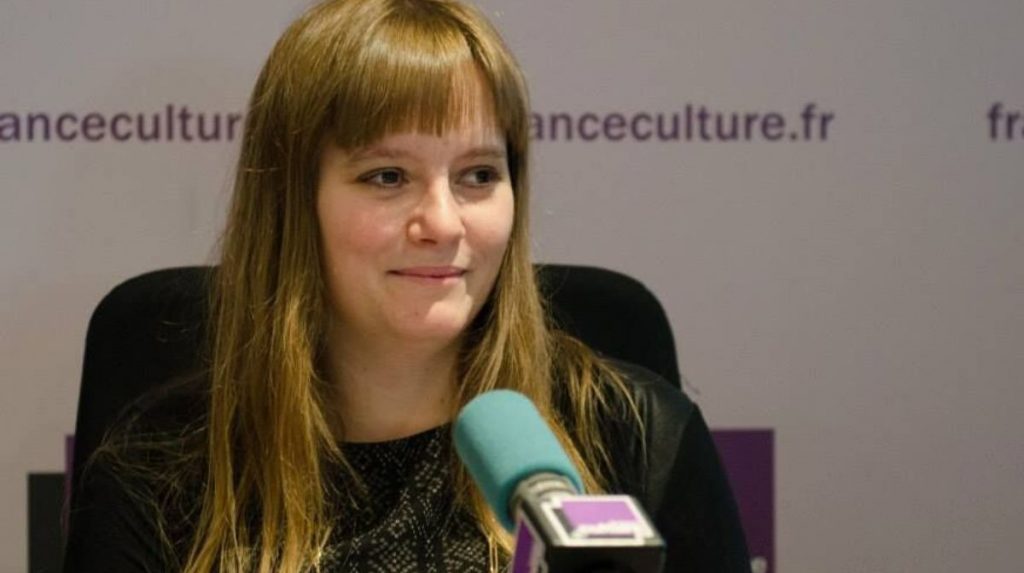Aude Bernheim: Researcher and Activist
In addition to being a microbiology and genetics specialist, what sets Aude Bernheim apart is her strong commitment to effecting change. When she is not tracking the similarities between bacterial and human immunity, the young researcher is working to erase the differences between the treatment of men and women in science.

Researcher, activist, author. At 32 years of age, Aude Bernheim has already accumulated many roles. She was recently awarded European Research Council (ERC) and Atip-Avenir funding to set up her own research laboratory and continue studying the capacities of bacteria to fight viruses. An emerging subject that she has been passionate about for nearly a decade, but to which no French team had been fully dedicated until now.
« This €1.5 million European funding will enable me to study the conservation of certain genes that govern the antiviral immunity of not just bacteria, but also animal cells, including humans, » summarizes the researcher. At the interface of bioinformatics and microbiology, this project arose out of the research that she had begun for her dissertation, starting in 2014. « Back then, I was working on CRISPR-Cas systems, enzymes produced by bacteria to fight bacteriophages – the viruses that infect them. The potential of these bacterial tools for human health has set in motion a strong research dynamic. »
Since then, in addition to the discovery of CRISPR-Cas, over 60 bacterial systems capable of fighting bacteriophages have been identified. « I identified two of them – viperin and retrons – during my post-doc. However, some of these molecular tools were quickly seen to be present in non-bacterial cells, including those of humans! » This is particularly the case with viperin. Thus, despite the extreme genetic variability of bacteria, there is thought to be evolutionary conservation of some of these antiviral weapons.
« At present, our ERC-funded project aims to explore this conservation, in order to better understand how bacteria defend themselves against bacteriophages, and also to assess how we might use these antiviral properties to fight viruses that are pathogenic for humans. » The researcher and the team she recruited are working in two stages: an initial phase of comparative genomics performed in silico enables them to suggest hypotheses that they then evaluate using experimental microbiology work.
Pan-bacterial immunity
Interestingly, the genes that encode the different antiviral enzymes are located next to each other within the bacterial genome. A particularity that facilitates the bioinformatics analyses aimed at discovering new antiviral systems. With PhD student Florian Tesson in her laboratory, the researcher has established an algorithm to characterize the number and type of protection systems present in a bacterial strain. « By studying over 21,000 bacterial genomes, we observed that the bacteria possessed an average of 5 different systems. However, there is major diversity between species and even within the same species: the number of systems present can vary from 0 to 57! » Bernheim therefore hypothesizes that bacteria do not protect themselves individually, but collectively: it is thought that, together with their congeners, they have a shared immune system whose functioning is based on their ability to easily transfer the genes necessary for their defense.
With Vincent Libis and Héléna Shomar, researchers in her unit, she also wants to conduct a study based on soil samples from throughout France. By analyzing the bacteria and bacteriophages they contain, the scientists hope to be able to identify other bacterial immune mechanisms of relevance to human health. « We are going to suggest that volunteer citizens send us samples of their environment. In addition to a wide variety of sampling, it will also be a way to raise awareness of the importance of soil biodiversity, » explains Bernheim.
For participatory and inclusive science
There is nothing surprising about this participatory science project in relation to the researcher’s journey: she has been exploring interdisciplinary and innovative approaches to life science research since she began her higher education. This experience has also proved to be decisive in more ways than one: « During my Master’s year 2, I opted to make biology research my main focus. Until that point, I knew I wanted to work to ensure that science had its full place in society, but I hesitated between that option and engaging in public policy around these issues. In the end, I chose research whilst at the same time engaging in activism. » To achieve this, she co-founded WAX Science (What About Xperiencing Science), an association aimed at promoting diversity in science and breaking gender stereotypes in and through science. « In that same year, as part of a student popular science club, Flora Vincent and I won a European video competition aimed at raising public awareness of the role of women in science. A project that opened our eyes to the magnitude of the issue. It was impossible for us to stop there. » Hence the creation of WAX Science. In the wake of that, the two young researchers wrote a book, L’intelligence artificielle, pas sans elles ! It draws the attention of the general public and decision-makers to the absence of women in the algorithms sector, and the risks of reproducing, or even amplifying, the resulting gender stereotypes if nothing is done.
« I am so privileged to be able to do research. But what I had previously imagined to be a conventional pathway actually appears to be strewn with difficulties related to being a woman, acknowledges Bernheim. So striving to make science more inclusive is not a choice for me, but a necessity. I am often asked how I combine the two activities, but I am more likely to ask myself how I could do anything but. The issue is too important, I cannot do less than my best to help bring about change. »
Note:
* unit 1284 Inserm/Université Paris Cité, Molecular Diversity of Microbes team, Learning Planet Institute Research, Paris
